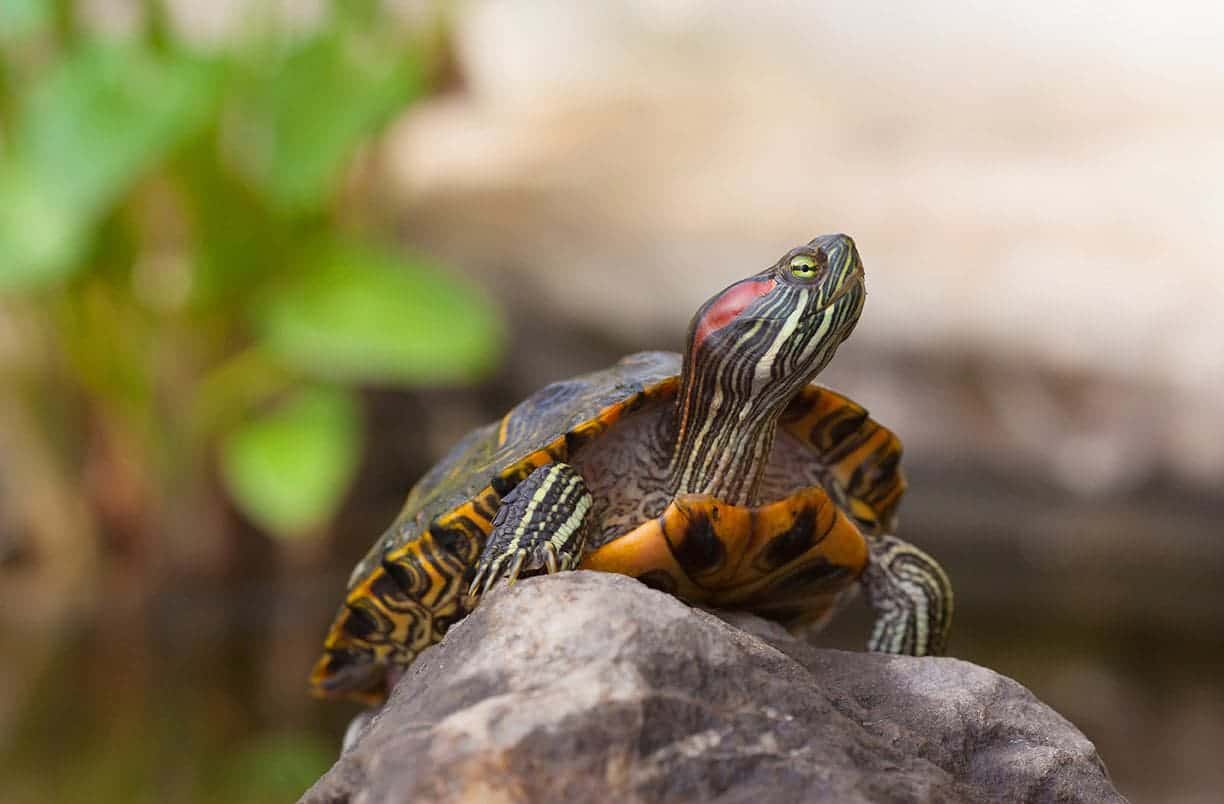Well, the short answer to that question is: it depends. I think that the idea of a pet turtle isn’t necessarily something that most people cling to (unless they are reptile lovers!). But when they go in someplace and see a cute little baby turtle, purchasing one as a pet can often sound like a great idea. And it is true, baby red-eared sliders are enticingly adorable! The problem comes when the people buying the turtles are not fully prepared for owning and caring for them long-term.
On the flip side, for those who are prepared to own a Red-Eared Slider and have decided they truly want one, these turtles can make great pets. My parents have a large outdoor pond in their backyard with a few koi, plants, and 2 Red-eared Sliders. Those two Sliders have been living there for several years and the pond is their dream home! They even go into hibernation every winter deep in the mud and then come out again in the spring. It is always fun to predict when the turtles will make their appearance! My three young children love to go over to their grandparents house and help feed the turtles by throwing pellets into the water. So for us, they have been great pets!

I was recently reading the article Talking Turtles, from the Pet Business newsletter, and they had some good points on what water turtles are and are not. They point out that many adult turtles purchased as babies end up not wanted and are given away (or released into the wild, which is even worse). This is in large part because people simply are not prepared for the needs and long-term care of an adult water turtle. Red-Ear Sliders become large as adults, they produce a lot of waste and need a lot of filtration, they don’t get along well with other aquarium dwellers, and they are often biters. It is illegal for Sliders under 4 inches to be sold, however many pet stores and other places still sell tiny turtles.
Just a quick overview on the basics of care for the Red-eared SliderTrachemys scripta. These are things you will really want to consider before deciding if this is truly a pet you want to pursue. First, these turtles can live quite a long time, anywhere from 30 to 60 years. In captivity, these turtles are often fairly calm and can be tame if held regularly. Many of them will be friendly enough that they will even take food right out of your hand! They are very hardy reptiles and will adapt to almost any environment. This means that you don’t have to be too particular in their enclosure temperatures or provide specific specialized foods or tank additions. However, this doesn’t mean that enclosure cleanliness is not important or that you shouldn’t attempt to give your turtle proper nutrition!
Red-Eared Sliders can be kept indoors or outdoors. Indoor turtles should be kept in a large enough tub with spaces to bask. They love basking! UVB bulbs should be provided for this purpose. A good filtration system is also a must, because turtles produce a lot of waste! It is most likely a good idea to refrain from keeping your turtle(s) with any other fish or aquatic animals because they will usually eat other fish (especially smaller ones). If you have a pond outdoors, this is a great place to keep a turtle. They will love the space, and the ability to bask in the sun.

Feeding a turtle can be easy. Providing them with purchased turtle pellets is a good way to start. Younger Red-Eared Sliders should be given a more varied diet to make sure they are receiving the proper nutrients for good shell growth. These turtles will eat insects, larvae, worms, and small fish. As they grow larger they will start to add plant matter to their diet. For this reason, it is always a good idea to keep aquatic plants in a turtles environment.
So, do Red-Eared Sliders make good pets? If you have a large enough area, like a good pet to just sit back and watch, and love reptiles, then they do make good pets! However, they aren’t the best pets in the “impulse buy” situation. If they are just bought on the spur of the moment because they are small and cute and the purchaser really has no idea how large they become or how long they live, then this isn’t the best pet situation. Unfortunately, many turtles are still bought under these circumstances and then end up without a home as adults.
Featured Image Credit: zoosnow, Unsplash
